The answer to the 300 Blackout vs 350 Legend debate is easy: It depends on what you want to do.
What is 300 BLK Good For?
AAC developed 300 BLK to offer ballistic performance comparable to the 7.62×39, but with a design that is more compatible with M4 magazines. It has since become a popular AR-15 cartridge. Its somewhat unique ability to seat a very heavy bullet gives it subsonic performance that is perfect for suppressor use. Most 300 BLK rifles are range toys, yet they’re also capable home defense tools.
What is 350 Legend Good For?
Winchester engineered 350 LGND to fill a niche. Some states have laws banning bottlenecked cartridges during deer season. That meant hunters had to use either 12 Gauge slugs or older loads like 444 Marlin or 45-70 Government to get their trophies. That’s why Winchester introduced the 350 LGND in 2019: It combines state of the art engineering with a straight-walled case to offer superior energy to the 30-30 Win, less recoil than the 450 Bushmaster (another straight-walled round), and superior penetration to that of the 243 Win.
So, do you want an AR-15 for target shooting and maybe self-defense? Or do you want a rifle for hunting deer in states including Iowa, Indiana, Ohio and Michigan? Like we said, simple enough. But still, so long as we’re talking about these two very different rifle rounds, let’s compare them a little more extensively.
300 Blackout vs 350 Legend: Side By Side
| 300 AAC Blackout | 350 Legend | |
|---|---|---|
| Case type | Rimless, bottleneck | Rebated rim, straight walled |
| Bullet diameter | 0.308 in | 0.357 in |
| Neck diameter | 0.334 in | 0.378 in |
| Shoulder diameter | 0.360 in | N/A |
| Base diameter | 0.376 in | 0.390 in |
| Rim diameter | 0.378 in | 0.378 in |
| Rim thickness | 0.378 in | 0.045 in |
| Case length | 1.368 in | 1.710 in |
| Overall length | 2.260 in | 2.260 in |
| Case capacity | 25.1 gr H2O | 36.5 gr H2O |
| Maximum pressure | 55,000 psi | 55,000 psi |
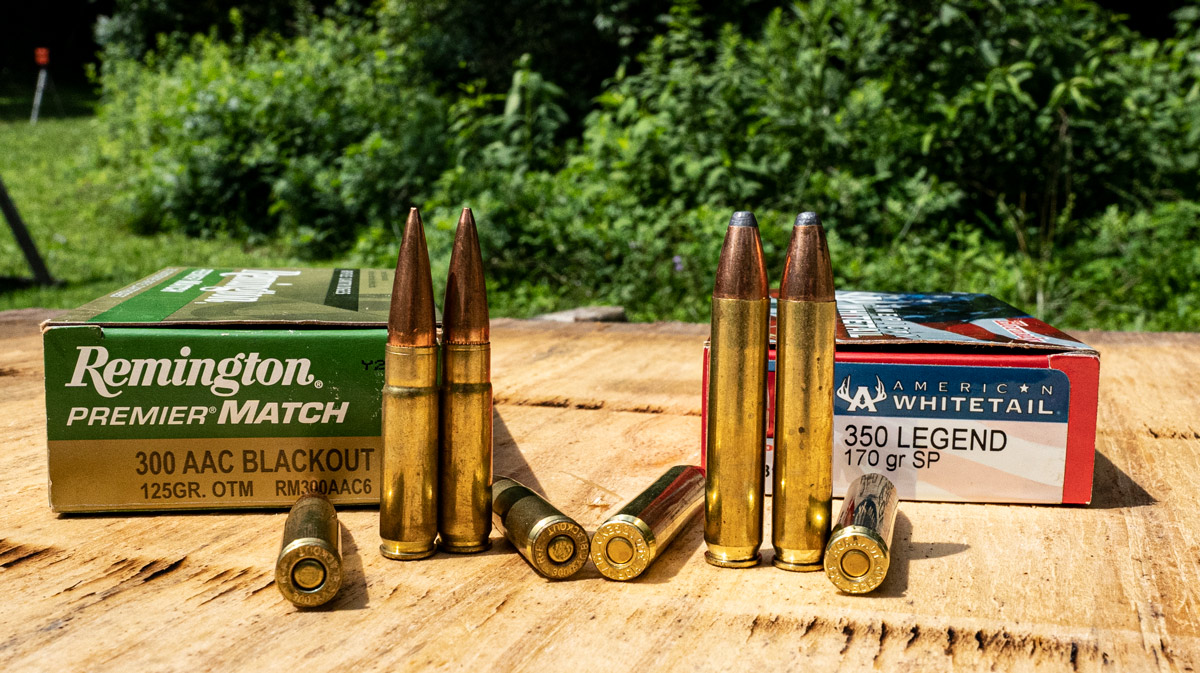
It’s easy to pick out these two rounds’ most glaring difference: Only the 300 BLK is bottlenecked (hence the 350 LGND’s lack of a shoulder diameter). A bottleneck case essentially focuses more energy behind its bullet during ignition to give it a faster muzzle velocity. A straight-walled round like the 350 LGND cannot provide this advantage. To be sure, its case isn’t a performance-enhancing feature – it’s solely there for compliance with certain states’ hunting ammo laws.
But the 350 Legend’s larger case has significantly more room for propellant to compensate for this. Because it isn’t necked down, the 350 LGND’s bullet is also much wider in diameter. This affects its ballistic coefficient (how effectively it can overcome air resistance in flight), its sectional density (how efficiently it penetrates soft tissue), and possible bullet weights.
The 350 LGND bullet usually weighs 150 to 180 grains, and its design also allows for some very heavy bullets. It actually shares this in common with 300 BLK ammunition, which often features very heavy bullets as well. And very heavy bullets, as you may know, permit the design of accurate subsonic cartridges. That’s why we included a comparison of two subsonic loads in our comparative ballistic data.
Ballistics Compared
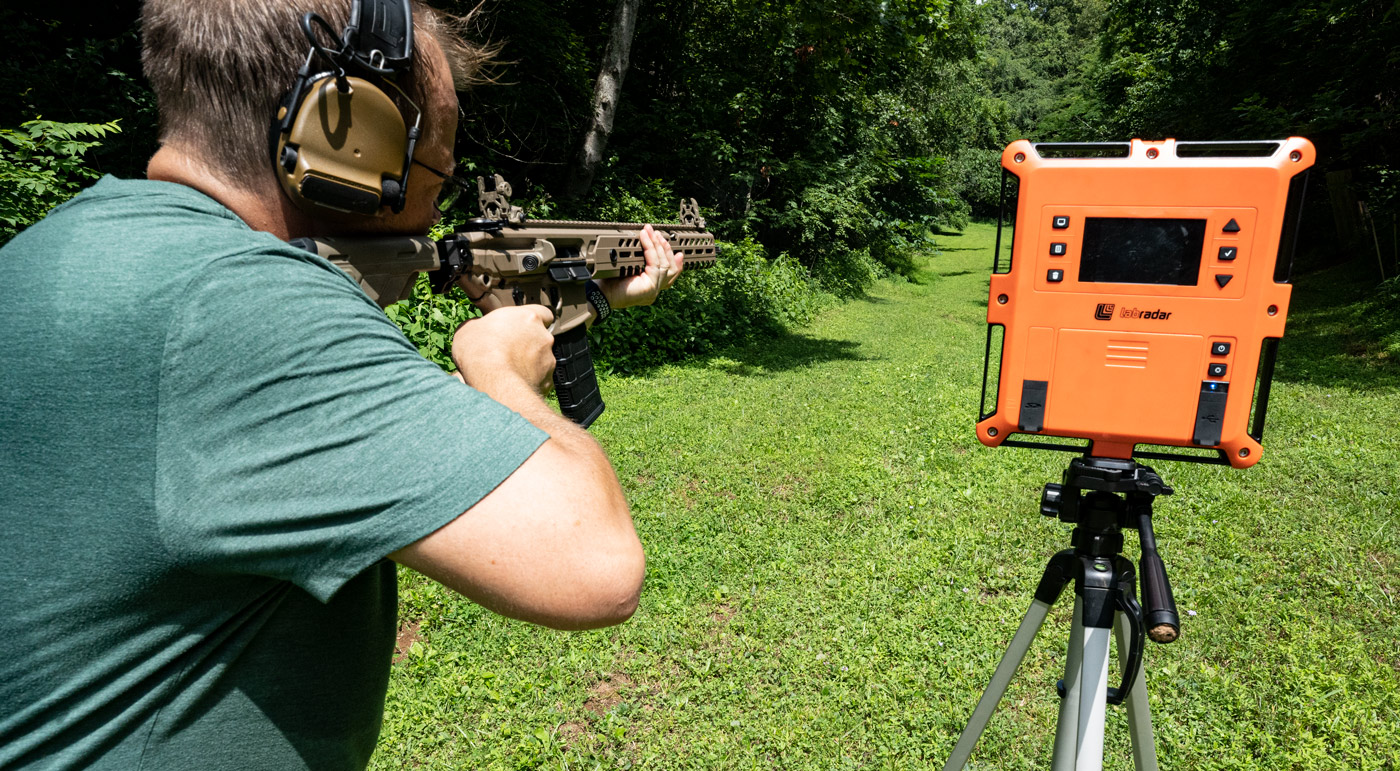
The two Winchester Deer Season XP cartridges are the most apples-to-apples comparison we could make. They have the same manufacturer, label and bullet weight and style. Thus, they demonstrate the ballistic differences pretty clearly.
Muzzle Velocity
Although the 350 LGND case isn’t bottlenecked, its larger propellant charge does give a bullet of the same weight a faster muzzle velocity. This compensates for its bullet’s inherently lower ballistic coefficient to grant it superior downrange velocities – and greater impact energy – within its effective range of 250 yards.
| 300 BlK - Winchester Deer Season XP 150 Gr | 350 Leg. - Winchester Deer Season XP 150 Gr | |
|---|---|---|
| Muzzle velocity (fps) | 1900 | 2325 |
| Velocity @ 50 yds | 1808 | 2144 |
| Velocity @ 100 yds | 1720 | 1972 |
| Velocity @ 150 yds | 1635 | 1809 |
| Velocity @ 200 yds | 1554 | 1656 |
| Velocity @ 250 yds | 1477 | 1514 |
| Velocity @ 300 yds | 1403 | 1384 |
| Velocity @ 350 yds | 1335 | 1270 |
| Velocity @ 400 yds | 1272 | 1173 |
| Velocity @ 450 yds | 1215 | 1097 |
| Velocity @ 500 yds | 1164 | 1037 |
Trajectory Considerations
The 300 BLK’s trajectory is not quite as flat as the 350 Legend’s, if only because its muzzle velocity isn’t as fast. So why do we consider the 300 BLK’s effective range to be double that of the 350 LGND at 500 yards? Well, that really reflects the difference in application more than it does accuracy. The 300 BLK is a combat/self-defense cartridge. So, we consider it to be effective at ranges where it would be too weak to humanely kill a whitetail – but still powerful enough to incapacitate a threat.
| 300 BLK - Winchester Deer Season 150 Gr. | 350 LEG - Winchester Deer Season 150 Gr. | |
|---|---|---|
| Elevation @ 50 yds | 3.18 | 2.1 |
| Elevation @ 100 yds | 5.17 | 3.79 |
| Elevation @ 150 yds | 4.22 | 3.24 |
| Elevation @ 200 yds | 0.02 | 0.02 |
| Elevation @ 250 yds | -7.78 | -6.37 |
| Elevation @ 300 yds | -19.57 | -16.57 |
| Elevation @ 350 yds | -35.78 | -31.31 |
| Elevation @ 400 yds | -56.87 | -51.45 |
| Elevation @ 450 yds | -83.33 | -77.89 |
| Elevation @ 500 yds | -115.69 | -111.56 |
300 Blackout vs 350 Legend: Energy
| 300 BLK - Winchester Deer Season 150 GR | 350 LEG - Winchester Deer Season 150 GR | |
|---|---|---|
| Muzzle energy (ft lbs) | 1203 | 1801 |
| Energy @ 50 yds | 1089 | 1532 |
| Energy @ 100 yds | 985 | 1296 |
| Energy @ 150 yds | 891 | 1090 |
| Energy @ 200 yds | 804 | 913 |
| Energy @ 250 yds | 726 | 763 |
| Energy @ 300 yds | 656 | 638 |
| Energy @ 350 yds | 594 | 537 |
| Energy @ 400 yds | 539 | 459 |
| Energy @ 450 yds | 491 | 401 |
| Energy @ 500 yds | 451 | 358 |
“Stopping power” takes several factors into account, including the width of the wound channel, how effectively the bullet expands, and the depth to which it penetrates. It’s difficult to say with certainty which of two rounds has greater stopping power – but it is easy to measure how much energy a bullet transfers to its target.
Stopping power depends a great deal upon impact energy as measured in foot-pound force. Muzzle energy is just the product of bullet weight and muzzle velocity; likewise, impact energy is the product of bullet weight and impact velocity.
What About Deer Hunters?
Now, we don’t imagine anyone would pick the 350 LGND as their preferred round for self-defense. It is designed for bolt-action rifles, which are optimized for long-distance accuracy and take far more time to chamber another round than semi-automatics. Since the 350 LGND was designed for deer hunting, and the minimum recommended foot-pound force for hunting deer is 1,000 ft lbs, let’s see the ranges at which the 300 BLK and the 350 LGND transfer at least that much energy.
| 1,000 ft lbs Distance (yds) | |
|---|---|
| 300 Blackout Winchester Deer Season XP 150gr EP | 92 |
| 300 Blackout Federal Power-Shok 150gr JSP | 78 |
| 350 Legend Winchester Deer Season XP 150gr EP | 174 |
| 350 Legend Federal Power-Shok 180gr JSP | 180 |
Fairly predictable results here. The 300 BLK emulates the performance of the original ammunition for the AK-47, a rifle developed for warfare and not deer hunting. That’s why it’s no surprise that the round which was developed specifically for deer hunting delivers 1,000 ft lbs of energy at approximately twice the distance as the 300 BLK.
Recoil
When comparing two rounds, it’s always good to consider how much recoil energy either one will subject you to. Lower recoil makes it easier to squeeze off accurate, successive shots, which can make hunting (and self-defense) immensely easier. It also makes shooting more comfortable, which you’ll appreciate if you plan to invest a lot of time at the rifle range.
It’s impossible to say exactly how much recoil you’ll experience. That depends not only on your rifle and its design, but also your own physique. We can’t look up information about your particular nervous system online, but we can objectively measure recoil energy with these data: bullet weight, muzzle velocity, propellant weight and rifle weight. For the sake of comparison, let’s assume all 300 BLK rounds have 17 grains of propellant and all 350 LGND rounds have 23 grains. We’re also firing two hypothetical 7 pound rifles.
| Recoil Energy (ft lbs) | |
|---|---|
| 300 Blackout Winchester Deer Season XP 150gr EP | 1.64 |
| 300 Blackout Federal Power-Shok 150gr JSP | 1.64 |
| 300 Blackout Winchester Super Suppressed 200gr OT | 1.32 |
| 350 Legend Winchester Deer Season XP 150gr EP | 2.06 |
| 350 Legend Federal Power-Shok 180gr JSP | 2.19 |
| 350 Legend Winchester Super Suppressed 265gr OT | 1.76 |
The 300 AAC Blackout rounds generate an average of approximately 1.5 ft lbs of recoil energy; the 350 LGND rounds, approximately 2.0 ft lbs of energy. In summation, both rounds deliver negligible recoil. Your shoulder should have no difficulty soaking up the minimal punishment delivered during an all-day range session.
Availability & Price
Neither the 300 BLK or 350 LGND are very rare cartridges. That said, the 300 BLK is far more popular. It’s not on par with .223 Remington by any measure, but as an AR-15 compatible cartridge that has been on the market for over a decade it’s had time to win over quite a few fans.
As a deer hunting round, the 350 LGND really can’t appeal to the tactical/self-defense crowd which is buying the most rifles these days. It was also only introduced in 2019. While it has earned a decent following in states which ban bottlenecked rounds for deer hunting, it really hasn’t had enough time to carve out a huge spot for itself.
Nearly every manufacturer makes 300 BLK nowadays. Even Wolf offers Russian 300 BLK in cheaper steel cases.
Only American manufacturers make 350 LGND at the time of writing this. So, the low-budget steel-cased options just aren’t available (as of mid-2021). You can find some pretty affordable 350 LGND FMJ range ammo, such as Browning’s. However, 300 BLK’s popularity is going to ultimately offer many more lower-priced options. It’s still more expensive than 223/5.56, though!
The Takeaway
You could hunt medium-sized game with the 300 BLK, although it’s really better suited for self-defense and possibly varmint hunting. That there are so many semi-automatic rifles chambered for the round is a testament to this.
The 350 LGND is the deer hunter’s round, as evidenced by the preponderance of bolt-action rifles chambered for it. And while you may prefer a bottlenecked cartridge if your state allows you to use one for deer hunting, the 350 Legend is top-notch if your state’s legislation requires you to hunt with something like it.

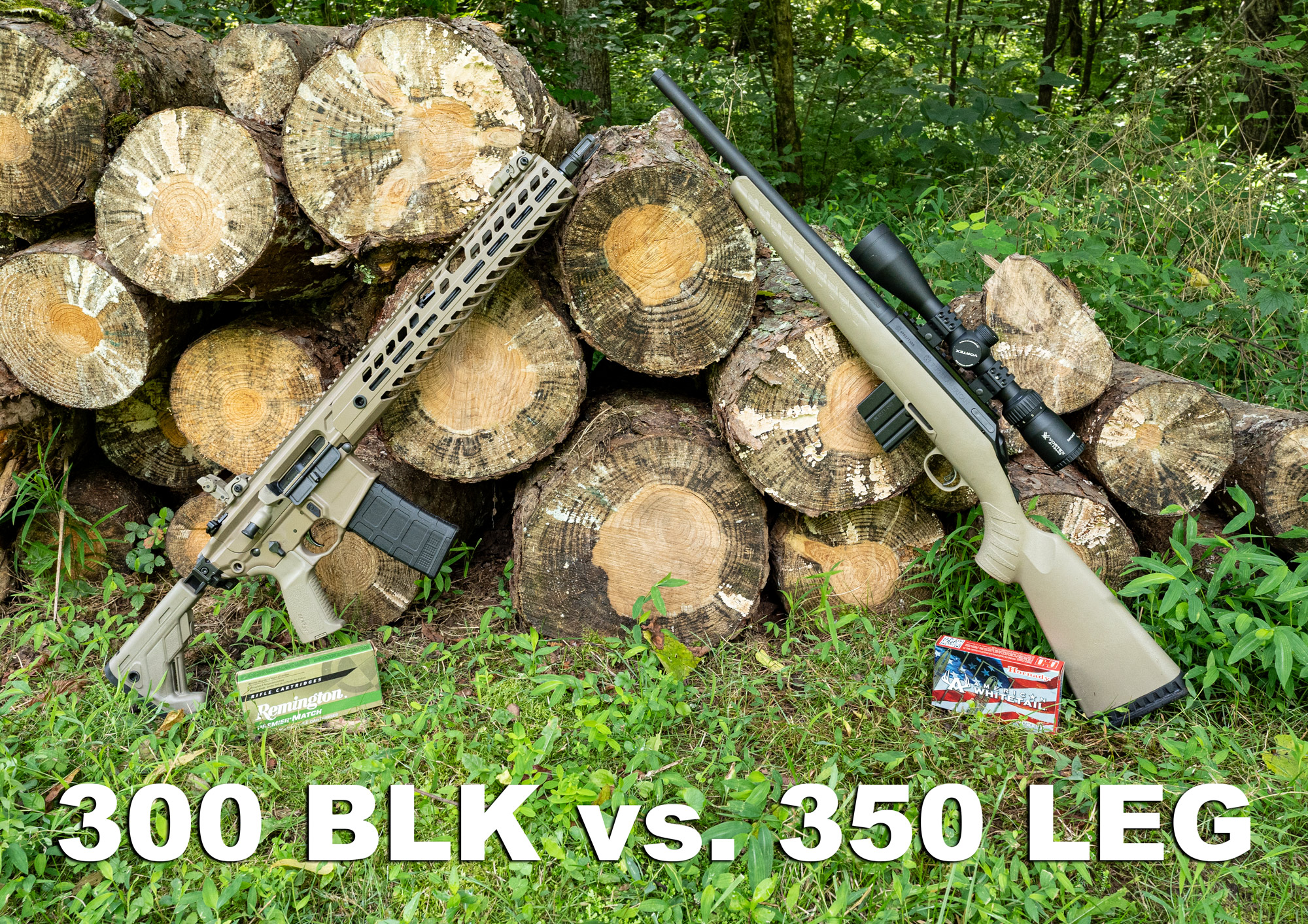
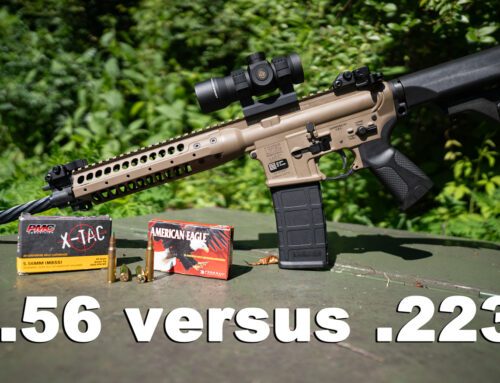
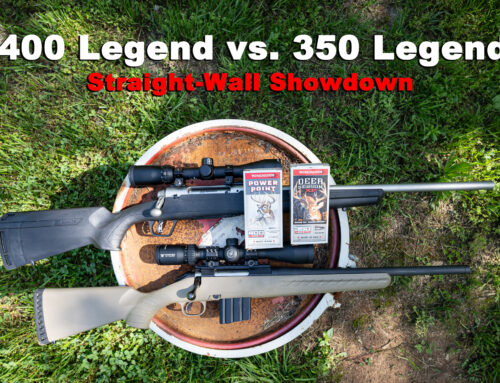
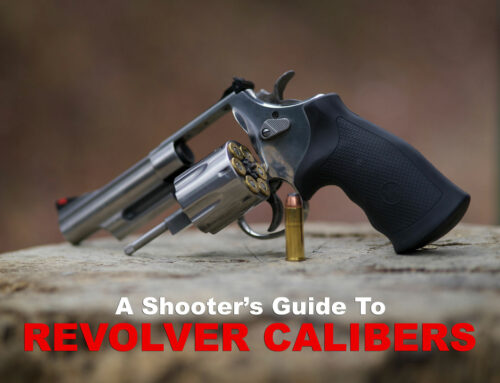
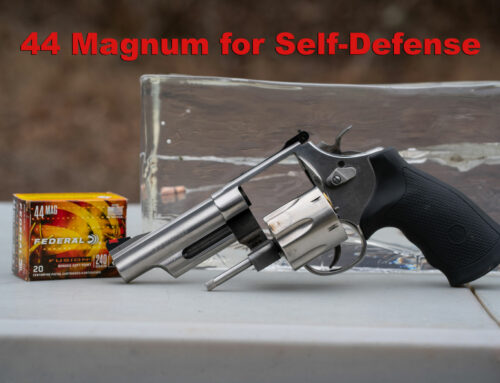
I actually recommend the 350 Legend as a home defense gun. Remember, it was designed around the AR-15 platform. There are reliable 20- round mags available. It’s an amazing preforming cartridge in an AR-pistol and is a serious hole puncher with less over-penetration concern that 300 Blackout. Both run great in an AR, and both run great surpressed with subsonic ammo. But, here in Michigan 350 legend ammo is more readily available and cheaper than 300 blackout. The Ruger AR pistol in 350 Legend is one effective little home defense weapon. I enjoyed reading this article.
I have a Wilson Combat AR in 350 Legend. I picked it up for feral hog hunts in Texas, which we do often. And also to have a deer rifle option here in Indiana, which requires straight wall rounds. Although I primarily bow hunt for deer. It is also my primary home defense rifle with lighter loads.
It is extremely effective on the feral hogs.
This is a great round for medium sized game out to about 300 yards, and for self-defense at closer ranges as well.
I bought my .350 legend rifle as more of a “I just want one” purchase. But after testing the deer season XP in gel at close range, I bought a second one (pistol) and they’ve become the primary as far as home defense. The bullet is absolutely devastating in gel! And under 50 feet penetration isn’t excessive.